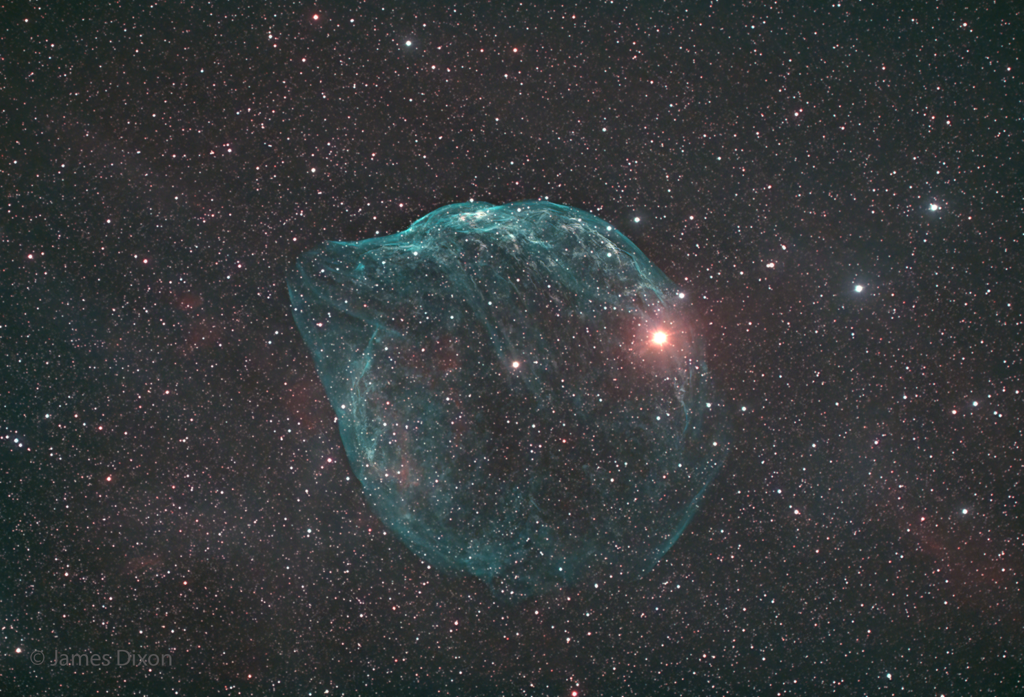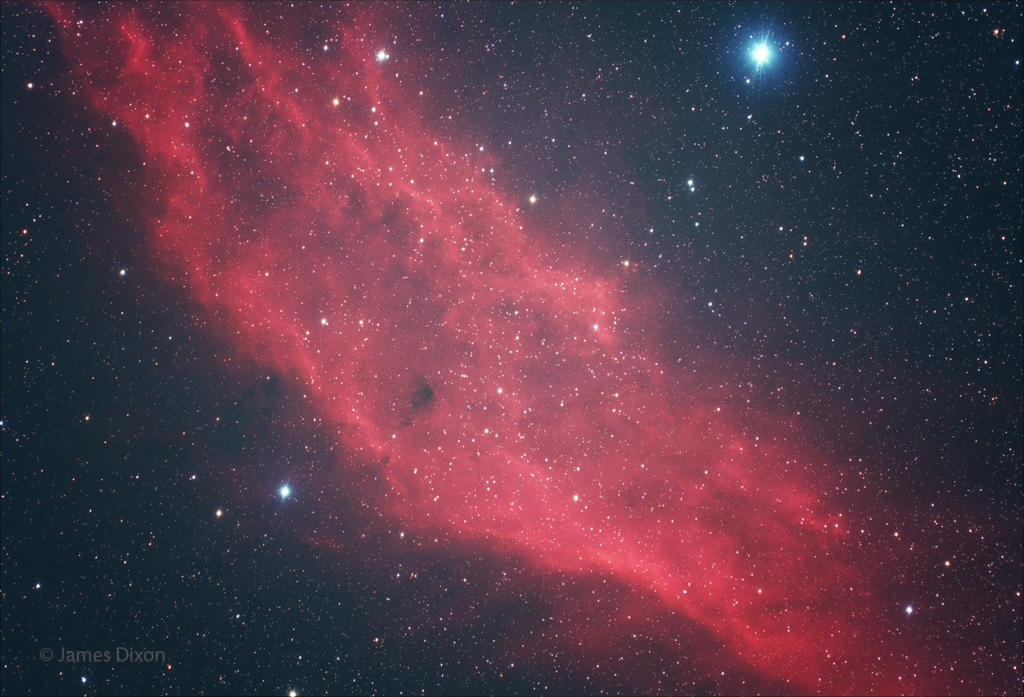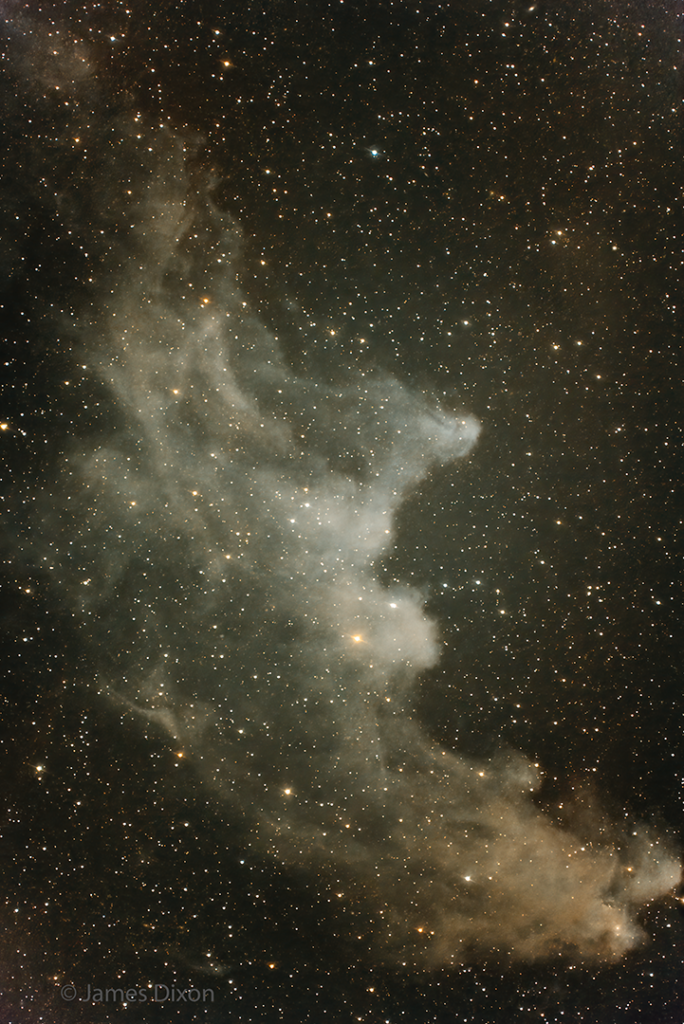Saturday night was a good night at the River Ridge Observatory. First we had a meeting, via Zoom, of the Central Arkansas Astronomical Society, then the three of us who came to the RRO to image after did just that. About this time last year I learned of this nebula and managed to get a middling image of it. Next year, I said.

This is a total of 4.5 hours of data shot with an 11″ SCT at f/1.9 (with Hyperstar) and an IDAS NBZ UHS dual narrow band filter. The filter lets the red of Hydrogen Alpha and the blue/green of Oxygen III through but not much else. The nebula is a bubble of gas being pushed out by the bright star near the center, a so-called Wolf-Rayet star. The reddish glow outside the bubble is hydrogen gas lightly glowing. The nebula itself is about the apparent size of the Moon but is estimated to be 60 light years in diameter and 5,000 light years away.
Stacked with Deep Sky Stacker. Processed with Photoshop. I used a trial of StarXTerminator to separate the nebula from the stars. Starnet++ is free but this product is much easier and faster. The stars and nebula were processed separately then recombined.
Here is a link to last year’s image.



